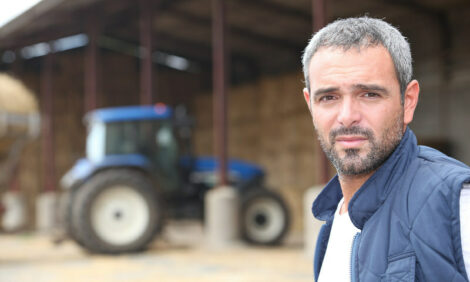



Research Finds Current Cattle Injections Increase Risk of Injury
UK - Research by experts at the University of Nottingham suggests that current injection techniques in UK dairy cattle need to change to avoid the risk of nerve injury.The study, carried out by a team of vets with anatomical, pathological and clinical expertise, discovered that current methods of injection are more likely to damage the sciatic nerve - particularly in dairy cattle with a low body condition score, such as those cows who have recently calved.
Cattle farmers are facing major challenges in remaining profitable while maintaining the high standards of animal welfare demanded by retailers and consumers. If the recommendation from this research is used by farmers and vets it will contribute to further improve dairy cattle welfare.
Dr Wendela Wapenaar, Associate Professor of Farm Animal Health and Epidemiology, led the project at the University's School of Veterinary Medicine and Science.
She said: "Improving animal welfare is one of our key aims as vets, and for a long time I have been wanting to answer the question around the risk of damaging the sciatic nerve when injecting dairy cattle in this gluteal region.
"Our study confirms a high risk of damaging this nerve when injecting cows in the gluteal region (the rump or back end of the cow). In beef cattle, farmers and vets are already avoiding this region because of the value of the primal cut meat, however in dairy cattle this site is still used because of convenience.
"In our experiment, we asked anyone who had injected cattle in the gluteal region before to inject the left and right gluteal region in a cadaver, as if it were 'a normal cow'. To our surprise, 69 per cent of participants injected within 5cm from the sciatic nerve and several participants injected right onto the sciatic nerve.
"We also discovered that the nerve was a lot wider than ever before reported in textbooks; in the gluteal region, the nerve was 3.5 to 4.5cm wide, making it more difficult to avoid. The depth of the nerve was variable; the shallowest point between the skin surface and nerve was only 2.5cm; this depth was dependent on the cow's body condition."
This research was carried out as part of a veterinary undergraduate research module and started in 2015. Research projects such as these offer third-year veterinary students an opportunity to explore veterinary research and discover their career possibilities in this field.
Dr Wapenaar has been working closely with Rosanna Kirkwood, an undergraduate student with a keen interest in farm animal health.
She said: "Based on our study findings, I strongly advise to inject all cattle in the neck where possible; when this is not feasible and the gluteal region is used as a site for intramuscular injection then a more lateral location should be chosen.
"The region between the tuber coxae (hook bone) and the tuber ischium (pin bone) has a substantial muscle mass, and there are no underlying neurological structures at risk. This small change in injection technique may prevent nerve damage and we hope farmers and vets will take this advice on, so we may see less cows with sciatic nerve damage in the future and avoid inflicting pain unnecessarily."
A video summary of the project from the Ruminant Population Health Research Group is available via the University of Nottingham You Tube channel and the full paper, Risk of Iatrogenic Damage to the Sciatic Nerve in Dairy Cattle, describing the study has been published by the Veterinary Record.
TheCattleSite News Desk


